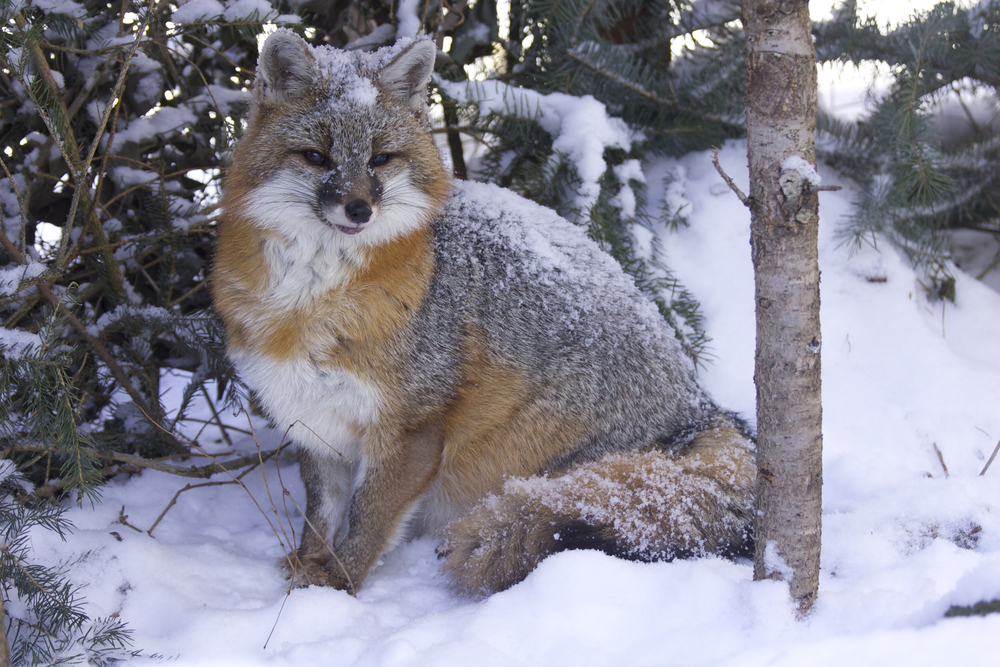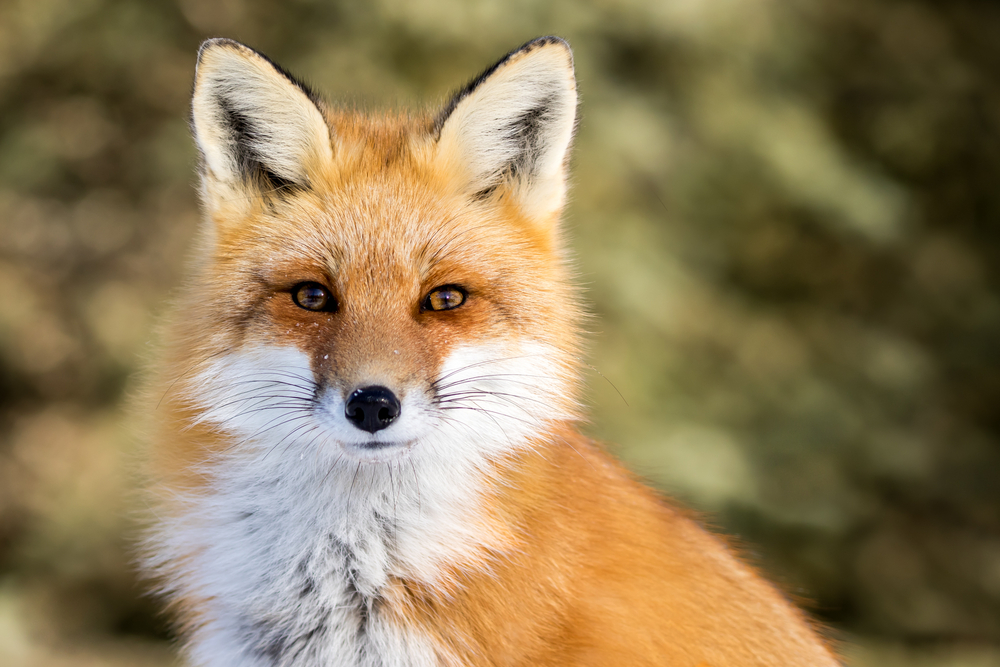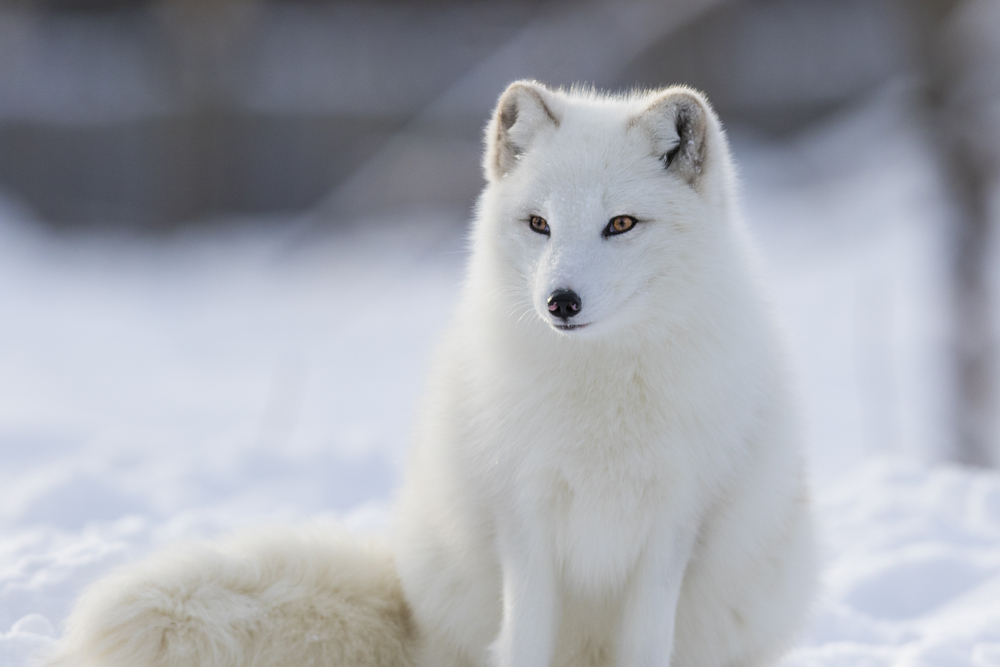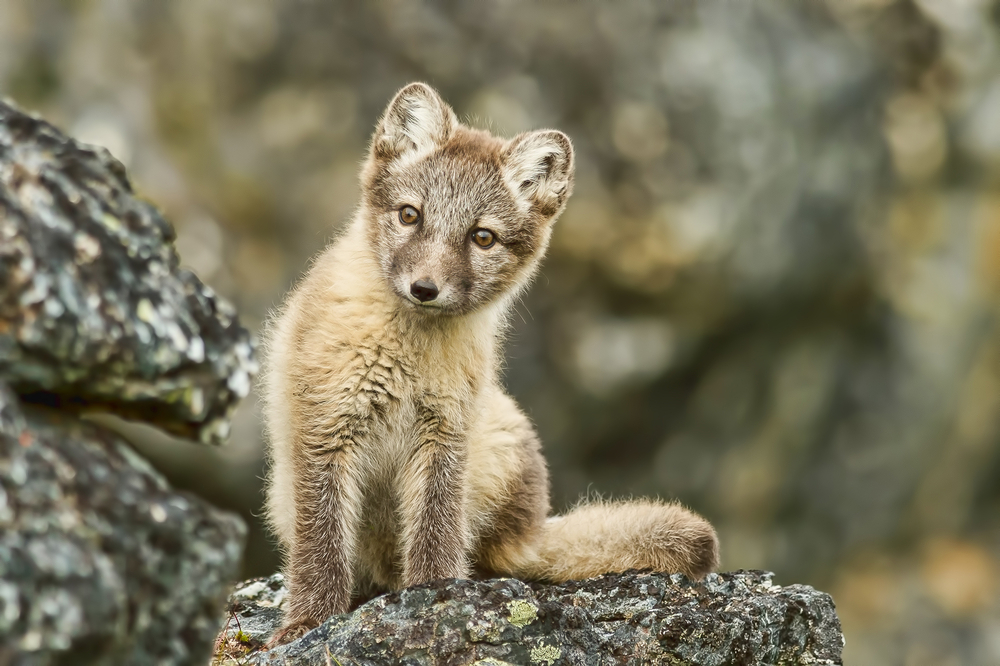About
The Arctic Fox, scientifically known as Vulpes lagopus, is a resilient and resourceful mammal perfectly adapted to the harsh conditions of the Arctic tundra. Belonging to the family Canidae, which includes wolves, coyotes, and domestic dogs, the Arctic Fox occupies a vital niche in the Animal Kingdom as a specialized predator in extreme environments.
With its thick, fluffy fur coat that changes color seasonally from brown in summer to white in winter, the Arctic Fox blends seamlessly with its icy surroundings. It possesses a compact body, short muzzle, and small ears, all of which help minimize heat loss and maintain warmth in frigid temperatures. Additionally, its keen sense of smell and sharp claws aid in locating and capturing prey beneath the snow.
Arctic Foxes inhabit the Arctic regions of North America, Europe, and Asia, where they navigate vast expanses of frozen terrain in search of food. They are highly adaptable creatures, capable of surviving in temperatures as low as -50°C (-58°F) by constructing elaborate underground dens for shelter and rearing their young. Their diet consists mainly of small mammals, birds, fish, and carrion scavenged from polar bear kills.
Arctic Foxes are opportunistic hunters, utilizing various hunting techniques to secure their next meal. They are known to stalk and pounce on unsuspecting prey hiding beneath the snow or scavenge carcasses left behind by larger predators. Their ability to survive on limited resources during the harsh winter months is a testament to their remarkable resilience and ingenuity.
Conservation Status
The conservation status of the Arctic Fox varies depending on the region, with some populations classified as least concern and others facing threats such as habitat loss, climate change, and predation by introduced species. While the overall population trend is relatively stable, ongoing conservation efforts are essential for safeguarding the Arctic Fox and preserving its fragile Arctic habitat for future generations.
Physical Characteristics
The Arctic Fox (Vulpes lagopus) is a resilient mammal, well-adapted to the harsh conditions of the Arctic tundra, characterized by several distinctive physical features:
Size and Weight:
- Length: Arctic foxes typically measure around 18 to 27 inches (46 to 69 centimeters) in body length, with a tail length of about 12 to 21 inches (30 to 53 centimeters).
- Weight: They weigh between 6 to 17 pounds (2.7 to 7.7 kilograms), with variations depending on factors such as age, sex, and seasonal changes.
Physical Characteristics:
- Thick Fur: Arctic foxes have a dense double-layered fur coat that provides insulation against extreme cold temperatures. The outer layer consists of long, guard hairs that repel moisture, while the inner layer is thick and woolly, providing warmth.
- Color Change: Their fur changes color with the seasons, from brown or gray in summer to a brilliant white in winter, allowing them to blend seamlessly with their snowy surroundings for camouflage.
- Compact Size: They have a compact body with short legs, rounded ears, and a short muzzle, all of which help minimize heat loss and conserve body heat.
- Bushy Tail: Arctic foxes have a long, bushy tail, which they use for balance, as well as wrapping around themselves for additional insulation during cold weather.
- Large, Rounded Paws: Their paws are covered in fur and have large, rounded footpads, providing traction on ice and snow, and acting as natural snowshoes to distribute their weight over soft surfaces.
These unique physical characteristics enable the Arctic fox to thrive in its frigid Arctic habitat, demonstrating remarkable adaptations for survival in one of the world’s harshest environments.
Reproduction
The reproductive cycle of the Arctic Fox is intricately linked to the harsh Arctic environment and the availability of resources. Here’s an overview:
Breeding Season: Arctic Foxes typically breed once a year, with the breeding season occurring from late winter to early spring, usually between February and April. The timing coincides with increasing daylight hours and the availability of prey.
Courtship and Mating: During the breeding season, male Arctic Foxes, known as reynards, compete for access to females, engaging in courtship displays and vocalizations to attract mates. Mating pairs may form monogamous bonds for the duration of the breeding season.
Gestation Period: After successful mating, the female Arctic Fox undergoes a gestation period that lasts approximately 52 to 53 days.
Birth and Litter Size: Arctic Foxes give birth to litters of pups in underground dens, typically located in snowdrifts or rocky outcrops. The size of the litter can vary depending on factors such as food availability and environmental conditions, but it usually ranges from 5 to 8 pups.
Maternal Care: The mother Arctic Fox provides dedicated care to her young, nursing them and keeping them warm in the den during the vulnerable early stages of life. The father may also assist in caring for the pups by bringing food to the den.
Weaning and Independence: As the pups grow, they transition from relying solely on their mother’s milk to consuming solid food regurgitated by both parents. They gradually become more independent, exploring their surroundings and learning essential hunting and survival skills from their parents.
Development and Learning: Young Arctic Foxes learn crucial skills from their parents, including hunting techniques, territory marking, and social behaviors. These skills are essential for their survival in the harsh Arctic environment.
Dispersal and Maturity: By late summer or early fall, the young Arctic Foxes begin to disperse from their natal dens, seeking their own territories. Dispersal helps prevent competition for resources within family groups and contributes to the species’ genetic diversity.
Reproductive Success and Population Dynamics: The reproductive success of Arctic Foxes is influenced by factors such as prey abundance, climate variability, and human disturbances. Conservation efforts aimed at protecting Arctic ecosystems are crucial for ensuring the long-term viability of Arctic Fox populations in the face of ongoing environmental changes.
Lifespan
Arctic foxes, also known as polar foxes, are highly adapted mammals inhabiting the Arctic regions of North America, Europe, and Asia. Their thick fur, rounded ears, and compact bodies help them survive in harsh, cold environments. Here’s an overview of the Arctic fox’s lifespan and the threats it faces:
Wild Lifespan: In the wild, Arctic foxes typically live for about 3 to 6 years. However, some individuals may live longer, reaching up to 10 years or more under favorable conditions. Their lifespan in the wild is influenced by various factors, including food availability, predation, and environmental conditions.
Lifespan in Captivity: Arctic foxes kept in captivity may have a longer lifespan compared to their wild counterparts. In zoos or wildlife rehabilitation centers, where they receive consistent food, shelter, and veterinary care, captive Arctic foxes can live up to 14 years or more. However, their lifespan in captivity can still be affected by factors such as stress and genetic predispositions.
Threats to Arctic Foxes:
- Climate Change: Climate change poses a significant threat to Arctic fox populations by altering their habitat and food availability. Melting sea ice and changing snow cover affect the availability of prey species such as lemmings and rodents, which are essential for the Arctic fox’s survival.
- Predation: Arctic foxes face predation from larger carnivores such as polar bears and wolves, particularly in areas where their ranges overlap. Nest predation by avian predators such as birds of prey can also impact Arctic fox populations, especially during the breeding season.
- Human Disturbance: Human activities in Arctic habitats, including resource extraction, tourism, and development, can disturb Arctic foxes and their habitats. Direct disturbances such as habitat destruction and pollution, as well as indirect impacts like increased human-wildlife conflict, can threaten the species’ survival.
- Overexploitation: Historically, Arctic fox populations were heavily exploited for their fur, leading to population declines in some regions. Although regulated hunting and trapping practices are in place in many areas, illegal hunting and poaching still pose a threat to vulnerable populations.
- Disease and Parasites: Infectious diseases and parasites can affect Arctic fox health and reproductive success. Diseases such as distemper and rabies, as well as parasitic infections from ticks and fleas, can weaken individuals and reduce their chances of survival.
Conservation efforts focused on habitat protection, climate change mitigation, sustainable resource management, and public education are essential for safeguarding Arctic fox populations and ensuring their long-term viability in their rapidly changing Arctic ecosystems.
Eating Habits
The Arctic fox, also known as the polar fox or white fox, is a small carnivorous mammal native to the Arctic regions of the Northern Hemisphere. With its thick fur and specialized adaptations, the Arctic fox has unique eating habits suited to its harsh habitat and cold climate.
Diet: Arctic foxes are opportunistic predators with a diverse diet that varies depending on the availability of prey in their environment. Their diet primarily consists of small mammals such as lemmings, voles, ground squirrels, and Arctic hares. They also feed on birds, bird eggs, fish, carrion, berries, and insects when available.
Hunting Technique: Arctic foxes use several hunting techniques to catch their prey, including stalking, pouncing, and ambush hunting. They rely on their acute senses of hearing and smell to locate prey under the snow or in burrows. When hunting small mammals like lemmings, Arctic foxes may perform “mousing” behavior, where they leap into the air to land on top of their prey hidden under the snow.
Scavenging: In addition to hunting, Arctic foxes are opportunistic scavengers and will feed on carrion left behind by larger predators such as polar bears and wolves. They may also scavenge food from human settlements or garbage dumps near Arctic communities.
Seasonal Adaptations: Arctic foxes undergo seasonal changes in their diet and behavior to survive the harsh conditions of the Arctic. During the summer months when prey is abundant, they may store excess food in caches to consume during the winter when food is scarce. In lean times, Arctic foxes may resort to eating plant matter, berries, or even seaweed along the coast.
Feeding Behavior: Arctic foxes are solitary animals, and their feeding behavior reflects this. They typically hunt and feed alone, although they may form monogamous pairs during the breeding season. After capturing prey, Arctic foxes may consume it on the spot or carry it back to their dens to feed themselves or their young.
Role in Ecosystem: As predators, Arctic foxes play a vital role in maintaining the balance of their Arctic ecosystems by controlling the populations of small mammals and birds. By preying on herbivores like lemmings, Arctic foxes indirectly influence vegetation dynamics and the structure of tundra ecosystems.
Conclusion: The eating habits of the Arctic fox are diverse and adaptable, allowing them to survive and thrive in the extreme conditions of the Arctic. From hunting small mammals to scavenging carrion, Arctic foxes employ a range of strategies to obtain the nutrients they need to survive in their icy habitat.
Uniqueness
The Arctic Fox is a remarkable and resilient animal, perfectly adapted to thrive in the harsh conditions of the Arctic tundra. Here are some key aspects that make the Arctic Fox unique:
Adaptive Fur: One of the most distinctive features of the Arctic Fox is its fur, which changes color with the seasons. In winter, it is pure white to blend in with the snow, providing camouflage from predators and prey. In summer, the fur turns to a brown or grey color to match the tundra’s rock and vegetation, helping it remain inconspicuous.
Compact Build: The Arctic Fox has a small, rounded body shape, short muzzle, and short ears, which minimize surface area exposed to the cold air. This compact build helps reduce heat loss in the frigid Arctic environment.
Incredible Endurance: Arctic Foxes can withstand extreme cold, with their thick fur and a keen ability to store body fat, which provides insulation and energy reserves during the freezing winter months.
Wide Range of Diet: Although primarily carnivorous, eating rodents, birds, and fish, the Arctic Fox is an opportunistic eater. It adapts its diet to include berries, seaweed, and insects, especially when other food sources are scarce.
Keen Hunting Skills: Arctic Foxes have incredible hearing, aided by their wide, front-facing ears, which allow them to locate and capture prey moving under the snow. They perform a characteristic hunting leap to pounce on prey detected beneath the snow cover.
Denning Behavior: They dig extensive burrow systems in the ground where they can escape from predators and harsh weather. These dens are often complex, with multiple entrances and can be used by generations of foxes.
Nomadic Tendencies: Arctic Foxes are known for their long wandering journeys across the ice and tundra, often traveling many miles in search of food, showcasing their adaptability and resilience.
Role in Ecosystem: As both predator and prey, Arctic Foxes play a crucial role in the Arctic food web. They help control the populations of small mammals and birds, and their scavenging habits make them vital in cleaning up the environment.
The Arctic Fox’s ability to adapt to its environment not only makes it a unique species but also a vital part of the Arctic ecosystem. Its charming appearance and fascinating behaviors have captivated the interest of scientists and nature enthusiasts alike.
Related Family Species
Sources
- Britannica, Arctic Fox, https://www.britannica.com/animal/Arctic-fox, retrieved November 2023.
- Burnie, David & Wilson, Don, Animal, Smithsonian Institute, Washington DC.
- Hickman et al, Integrated Principle of Zoology, McGraw Hill, Boston.















































































